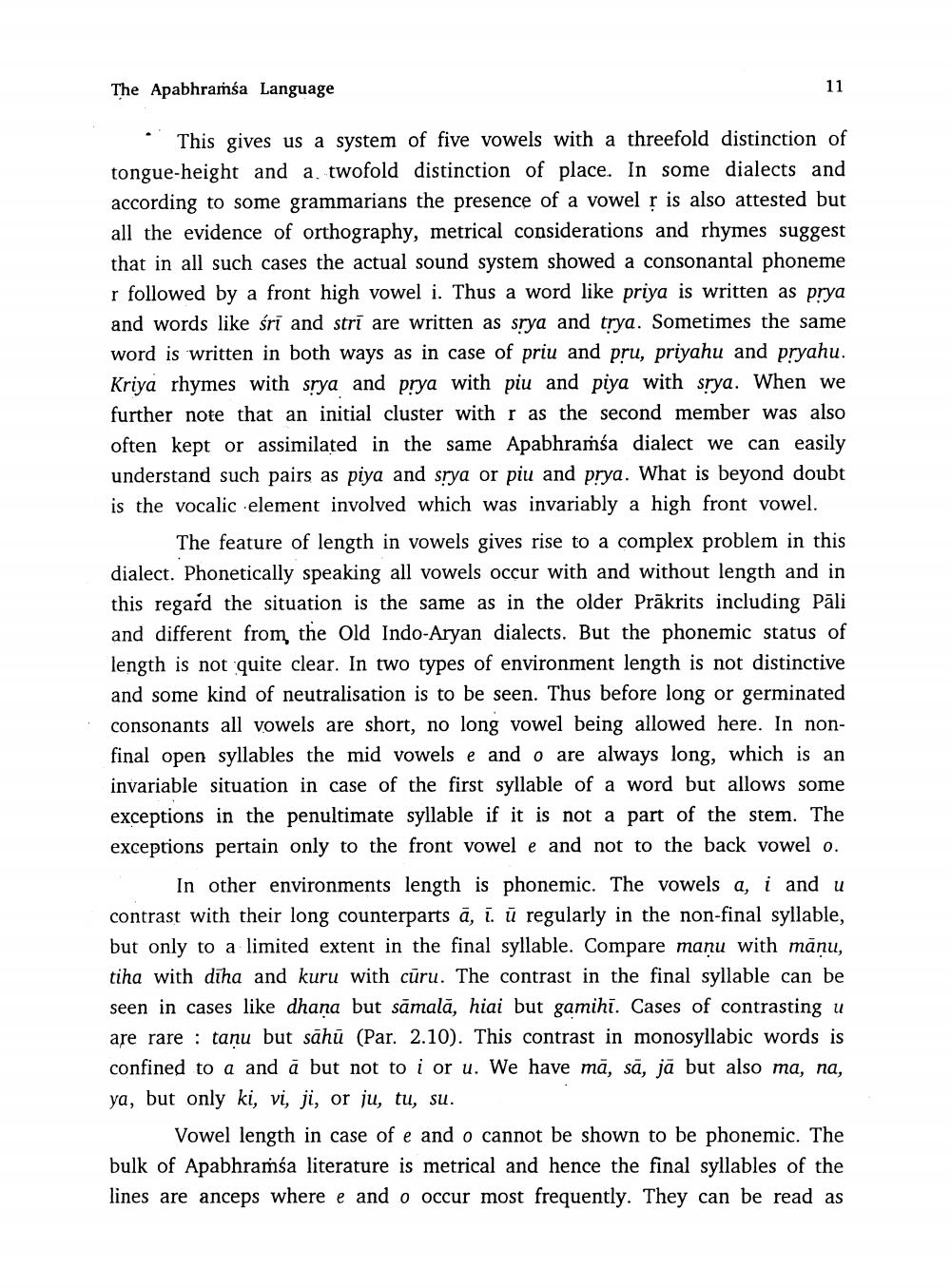________________
The Apabhramsa Language
This gives us a system of five vowels with a threefold distinction of tongue-height and a twofold distinction of place. In some dialects and according to some grammarians the presence of a vowel r is also attested but all the evidence of orthography, metrical considerations and rhymes suggest that in all such cases the actual sound system showed a consonantal phoneme r followed by a front high vowel i. Thus a word like priya is written as prya and words like śrī and strī are written as srya and trya. Sometimes the same word is written in both ways as in case of priu and pru, priyahu and pryahu. Kriya rhymes with srya and prya with piu and piya with srya. When we further note that an initial cluster with r as the second member was also often kept or assimilated in the same Apabhramśa dialect we can easily understand such pairs as piya and srya or piu and prya. What is beyond doubt is the vocalic element involved which was invariably a high front vowel.
The feature of length in vowels gives rise to a complex problem in this dialect. Phonetically speaking all vowels occur with and without length and in this regard the situation is the same as in the older Prākrits including Pāli and different from the Old Indo-Aryan dialects. But the phonemic status of length is not quite clear. In two types of environment length is not distinctive and some kind of neutralisation is to be seen. Thus before long or germinated consonants all vowels are short, no long vowel being allowed here. In nonfinal open syllables the mid vowels e and o are always long, which is an invariable situation in case of the first syllable of a word but allows some exceptions in the penultimate syllable if it is not a part of the stem. The exceptions pertain only to the front vowel e and not to the back vowel o.
In other environments length is phonemic. The vowels a, i and u contrast with their long counterparts ā, ī. ū regularly in the non-final syllable, but only to a limited extent in the final syllable. Compare manu with mānu, tiha with diha and kuru with cūru. The contrast in the final syllable can be seen in cases like dhana but sāmalā, hiai but gamihi. Cases of contrasting u are rare : tanu but sāhū (Par. 2.10). This contrast in monosyllabic words is confined to a and a but not to i or u. We have mä, sä, jä but also ma, na, ya, but only ki, vi, ji, or ju, tu, su.
Vowel length in case of e and o cannot be shown to be phonemic. The bulk of Apabhraíśa literature is metrical and hence the final syllables of the lines are anceps where e and o occur most frequently. They can be read as




